Saturday, March 05, 2005
Æ antoninianus, Gallienus, Siscia, Göbl 1490b
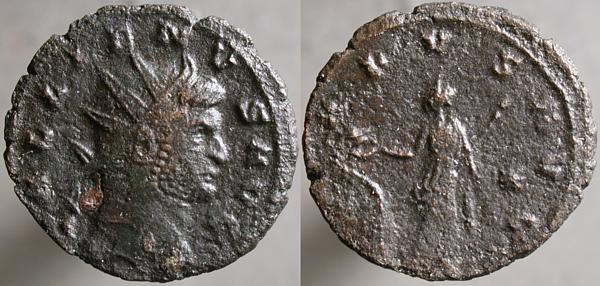
GALLIENVS AVG, Radiate head right | SALVS AVG, Salus standing facing, head left, feeding snake rising from cippa left, holding transverse scepter. Star in right field.
Like Thurday's coin from Antioch, this names Salus, Roman goddess of health. Unlike that coin, it also shows her, feeding the snake that was a symbol of health and which would identify the goddess even if there were no inscription.
Friday, March 04, 2005
Æ28, Anazarbus in Cilicia, Valerian, SNG Copenhagen 57
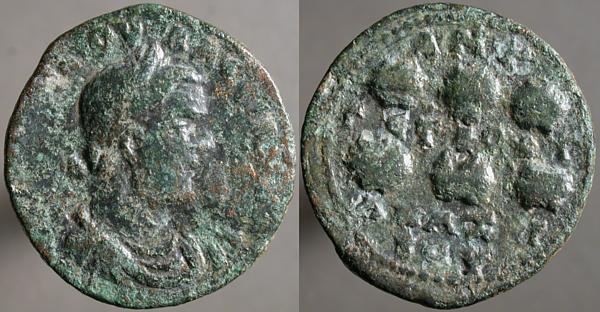
[AVT K Π ΛI] OVAΛEPIANOC CE, Radiate draped cuirassed bust right | A M K / Γ ET BOC Γ / ANAZAP / BOV, Six prize crowns in two rows.
Not a prime example of 1,700 years of preservation, this is in good enough shape to be sure of the identification. A collector often faces a decision between having an imperfect example of a coin now or waiting for, and perhaps never finding, the best example.
This time I chose not to wait.
Thursday, March 03, 2005
Æ antoninianus, Gallienus, Antioch, Göbl 1670i
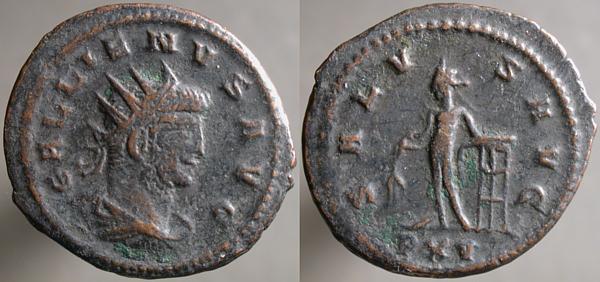
GALLIENVS AVG, Radiate draped cuirassed bust right | SALVS AVG, Apollo standing facing, head left, holding branch left, leaning on tripod right. PXV in exergue.
Salus was the Roman equivalent of Hygieia, goddess of health and sanitation (but distinct from Cloacina.) While Salus is named on this reverse, Apollo is depicted.
Wednesday, March 02, 2005
AR denarius, Severus Alexander, Rome, RIC 246
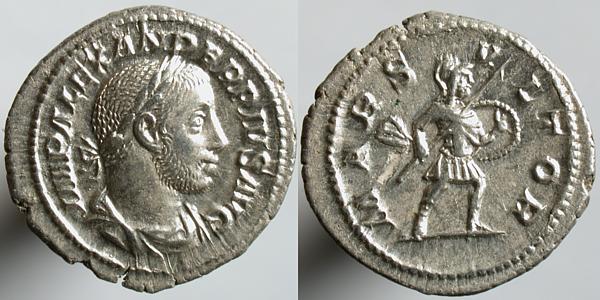
IMP ALEXANDER PIVS AVG, Laureate draped bust right | MARS VLTOR, Mars, advancing right, shield in left hand, spear in right hand.
Marcus Aurelius Severus Alexander became emperor at the age of 17, on the death of his cousin Elagabalus in 222.
Military success in his early reign was followed by the legion's dissatisfaction with a policy of bribing the enemy, thus denying the soldiers the opportunity for booty. Maximinus "Thrax", his successor, may have encouraged this dissatisfaction. In 235 Alexander and his mother were assassinated by the legions.
This reverse design of Mars advancing in a crouch was used by Gallienus 25 or more years later. I assume it's based on some well-known statue.
A good, informative site on Alexander and his coinage can be found here.
Tuesday, March 01, 2005
Æ23, Iconium in Lycaonia, Gallienus, SNG von Aulock 5396
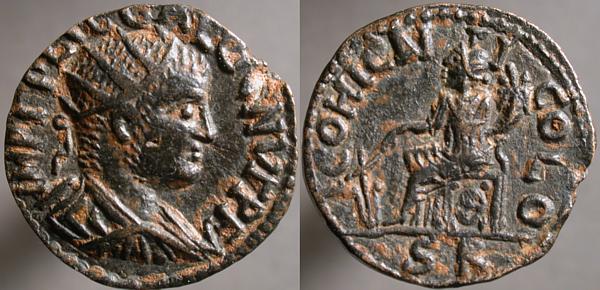
IMP Γ P LIC GALLIENVΓ P F A, Radiate draped cuirassed bust right | ICOHIEN_I COLO, Fortuna seated left, holding rudder left and cornucopia right. Wheel beneath her throne. SR in exergue.
The Gallienus version of Sunday's Valerian coin, the Greek letters mixed into the obverse legend suggest that the die engraver wasn't entirely comfortable in Latin, though that was the official language at the colony city.
Monday, February 28, 2005
Billon antoninianus, Gallienus, Rome, Göbl 585w
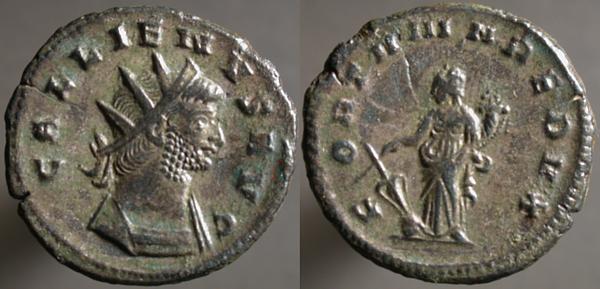
GALLIENVS AVG, Radiate cuirassed bust right | FORTVNA REDVX, Fortuna standing left, holding rudder on globe left, and cornucopia right.
The Romans weren't a great sea-faring people, lacking the compass for navigation and preferring to stay within sight of land. Fortuna, goddess of fortune or luck, is always seen, like the Greek Tyche, with a rudder, making an analogy between the course of one's life and the course of a ship.
Sunday, February 27, 2005
Æ23, Iconium in Lycaonia, Valerian, SNG von Aulock 5392
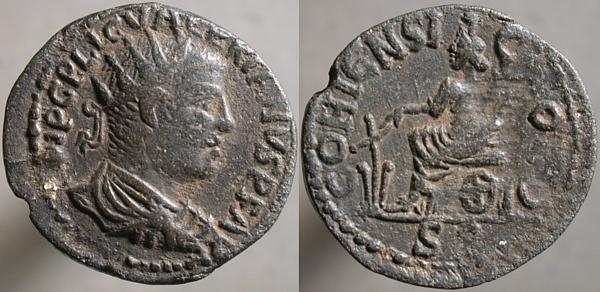
IMP C P LIC VALERIANVS P F A, Radiate draped cuirassed bust right | ICOHIENSI CO[L]O, Fortuna seated left, holding rudder left and cornucopia right. Wheel beneath her throne. S[R] in exergue.
Previously I've posted coins from Iconium with more dramatic mythological reverses here and here. This reverse of Tyche seems rather unexciting in comparison.

